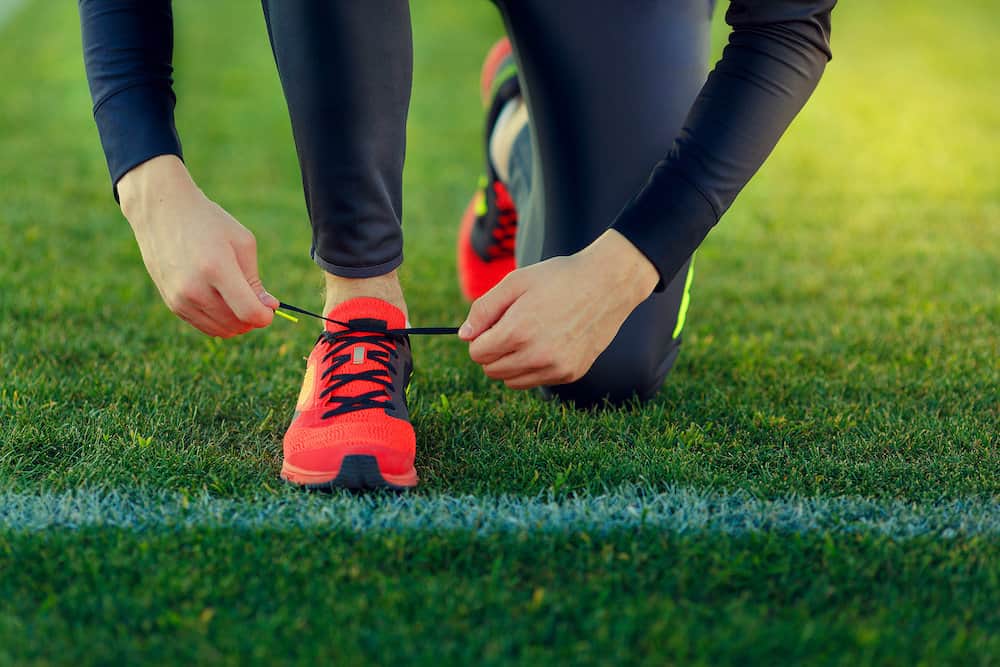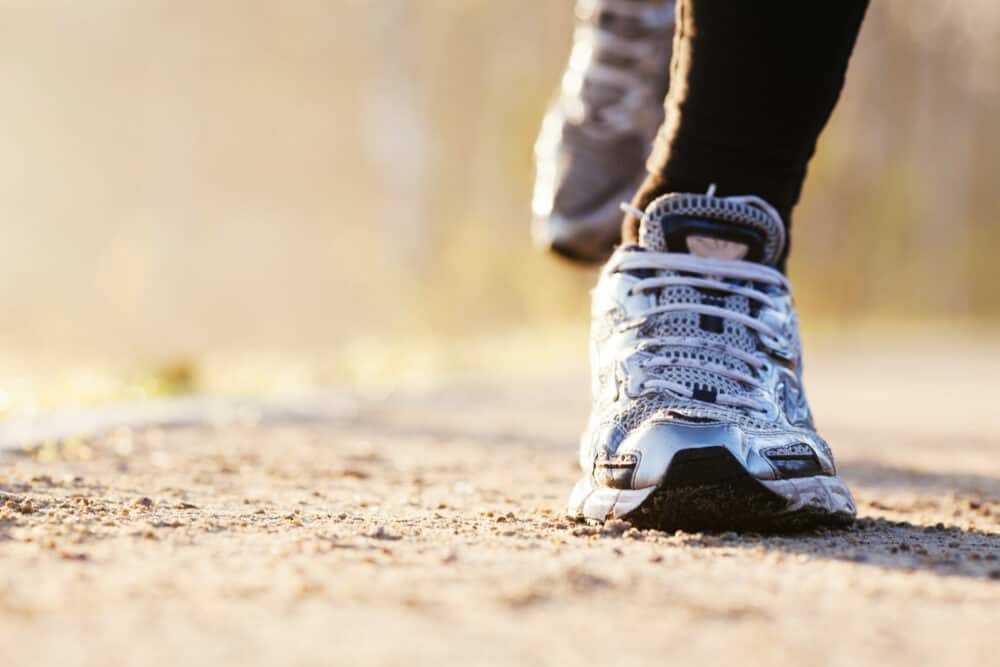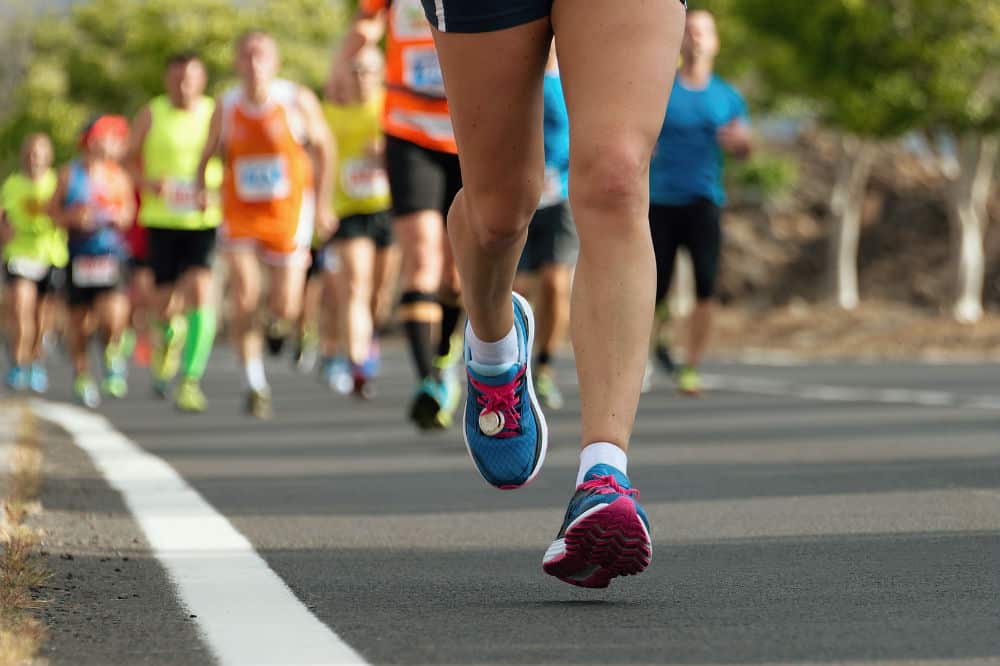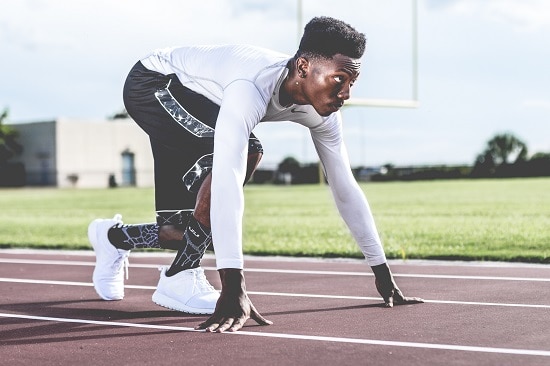Getting a new pair of runners comes with many questions, from how tight to tie shoes for running to how to choose the right shoe size.
Although it might seem trivial at first, knowing how tight to tie your shoes can make a massive difference to your performance and safety.
So, whether you are an experienced runner or someone looking to get into it for the first time, you’ll find these tips essential to your success.
Before We Get Started: 3 Rules to Follow
Finding the perfect fit for your running shoes has everything to do with your comfort, foot shape, and preferences.
Let’s review some general rules that guarantee the perfect fit for every pair of shoes:
Rule 1: Check the Toe Box
The very first part of your shoe you will want to consider is the toe box at the very front.
Ideally, you’ll want enough room to wiggle your toes, but you won’t want the toe box to be so large that your feet slide around.
In most instances, runners recommend having one thumbnail (0.5 to one inch) of space between the top of your shoe and the tip of your toe.
That said, it is also important to pick a toebox based on the terrain you typically run on.
For example, slippery terrain can cause your feet to shift more than if you were running on dry terrain.
Also, running uphill makes a noticeable difference compared to running downhill.
Rule 2: Check the Shoe’s Width
Once you are comfortable with the toebox size on your shoes, it’s time to consider the overall width of the footwear.
It can be incredibly uncomfortable for runners to wear shoes that are too tight, and very dangerous to wear loose shoes.
This is particularly important to note if you suffer from bunions or have wide feet.
It’s vital that your shoes never feel too tight, even if you think they have to be broken in.
Breaking shoes in is a common myth and can cause serious discomfort over the coming months.
Instead, it’s better to choose shoes that fit from day one, offering a comfortably snug fit rather than tight.
Rule 3: Check the Heel Cup
Working to the back of the shoe, the last piece to check is the heel cup and its tightness.
This part of the shoe is designed to cradle your foot rather than make it feel like it is strapped in.
You will also want to ensure it is not too loose, as a poorly sized heel cup can cause your feet to slip and slide around.
The more snug the heel cup is, the more secure your feet will fit in your runners.
Not only does this make them more comfortable to wear, but it lowers the chances of your feet popping out while you’re running.
A perfectly sized heel cup is also known to help reduce ankle discomfort and the chances of injury over time.
How Tight to Tie Shoes for Running: Popular Shoe Tying Options
As you can likely gather by now, the most important part of tying your runners is to make sure they are not too tight or too loose.
You won’t want the upper of your shoes digging into the tops of your feet.
At the same time, you also won’t want your feet sliding around in the shoe without any stability or support.
The size of your shoe influences these factors. Did you know that how you tie your shoe can also have much to do with how it fits?
Different tying methods offer added support, structure, and stability for more intense or casual runs.
Let’s explore some of the most popular methods for tying your runners and each style’s benefits.
Runner’s Loop
As a runner, you are likely accustomed to tying runner’s loops in your shoes. The central premise of this tying method is to ensure your foot is held secure and firm.
As a result, your toes are less likely to bump the front of the toe box, and your heel remains firmly in place.
One of the largest benefits of runner’s loops is that most standard laces that come with shoes are equipped for this type of tying.
They will have extra material to make it simpler for you to get the extra leverage and security you need.
You may also find the shoe’s eyelets are perfectly positioned to accommodate a runner’s loop.
Here are the steps for tying a runner’s loop:
Step 1: Start by lacing your shoes as you normally would until you get to the second eyelet on each side.
Step 2: Instead of crossing the laces this last time, insert the lace into the top eyelet on its side, creating a loop.
Step 3: Pull each lace across, forming a loop on the other side of the shoe.
Step 4: Continue pulling the lace ends so that the loops shrink and become secure on both sides.
Step 5: Finish tying your shoes as you normally would.
Window Lacing
Window lacing is another common way to tie your runners, especially if you are someone with sensitive feet.
If you’ve noticed a pressure point at the top of your foot that’s uncomfortable when tying your shoes, window lacing can help.
It assists with preventing box lacing, allowing your foot to move freely without rubbing against uncomfortable lacing.
By the end of the process, it will be easy to see where this type of lacing got its name from.
When finished, you will have a comfortable little window for the top of your foot to sit in.
Here are the steps for working with window lacing:
Step 1: Unlace your shoe until you reach the eyelet below the pressure point for your foot.
Step 2: Take your laces on each side and bring them through the eyelets on their sides rather than crisscrossing them.
Step 3: Continue with this lacing method until you’ve paced your shoe’s pressure point.
Step 4: Finish lacing the rest of your shoe normally, crisscrossing the laces for tightness.
How Tight Should My Shoelaces Be for Running?
Knowing how tight to tie shoes for running has a lot to do with your foot anatomy and personal preference.
Ideally, you won’t want the shoes to feel too tight, as this can be uncomfortable for long-distance runs, but they should also not be too loose.
We recommend finding a snug fit with the perfect lacing style that keeps your toes, midfoot, and heel secure.















Thank you to the author for sharing this helpful information on finding the right fit for running shoes. As a runner, I know how important it is to have shoes that are comfortable and offer the necessary support for my feet. Following the three rules outlined in this article, such as checking the toe box, width, and heel cup, will be valuable in ensuring that my running shoes fit properly and help prevent discomfort and injury. The different shoe-tying options and their benefits are also useful to consider when trying to find the best fit for my feet. This article will definitely be a useful resource for me in finding the right running shoes.
Hi, Carrie, and thank you.
Thank you for your kind words.
Yes, it is a critical factor to know. And to find out what fits best for your feet. Too many runners, unfortunately, use the wrong shoes, which is bad for them.
It is great to hear about the benefit of the article too!
Don’t hesitate to contact me to help you with anything else or if you have any questions.